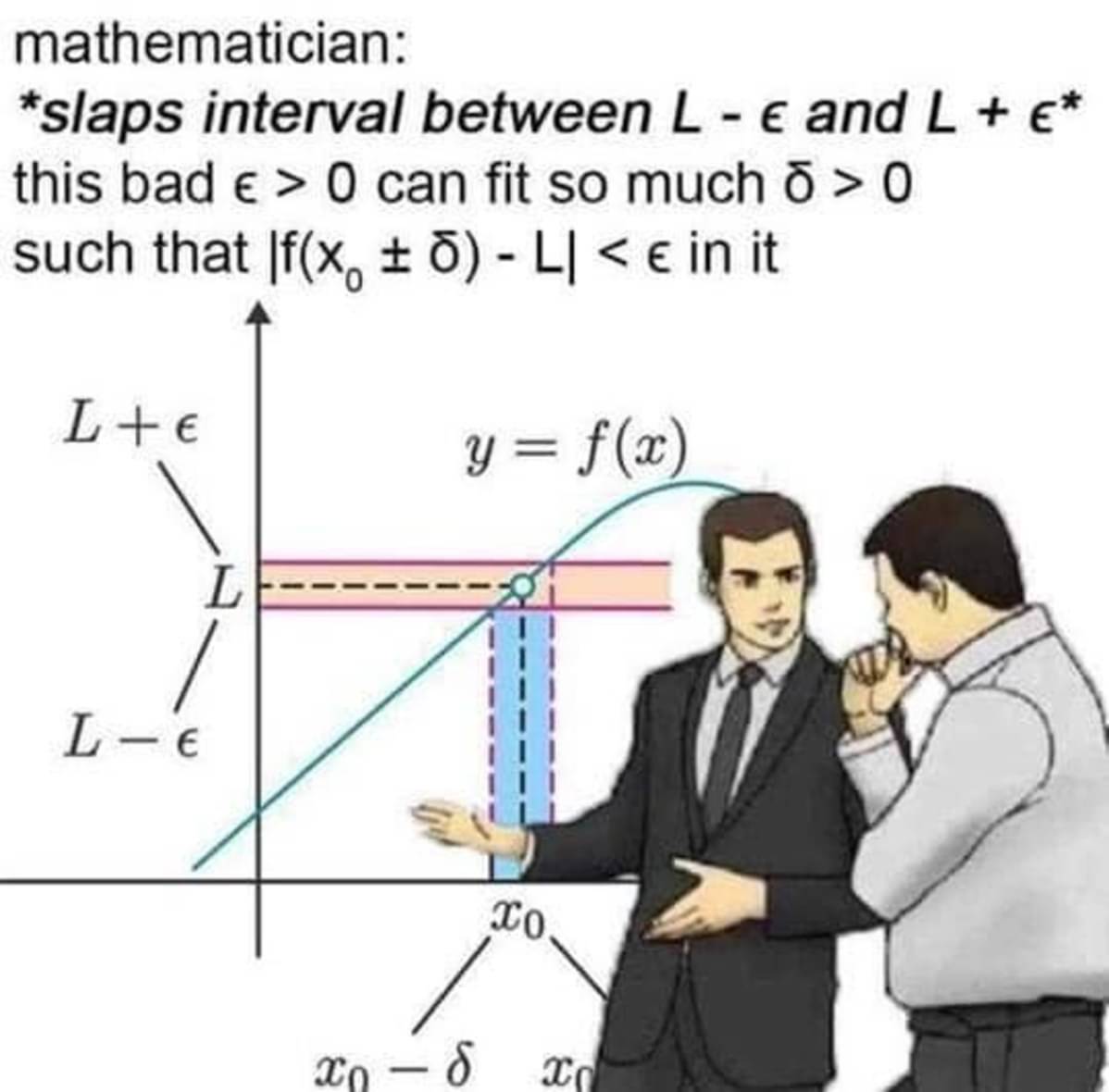this post was submitted on 07 Sep 2024
317 points (98.5% liked)
Science Memes
10322 readers
2360 users here now
Welcome to c/science_memes @ Mander.xyz!
A place for majestic STEMLORD peacocking, as well as memes about the realities of working in a lab.

Rules
- Don't throw mud. Behave like an intellectual and remember the human.
- Keep it rooted (on topic).
- No spam.
- Infographics welcome, get schooled.
Research Committee
Other Mander Communities
Science and Research
Biology and Life Sciences
- !abiogenesis@mander.xyz
- !animal-behavior@mander.xyz
- !anthropology@mander.xyz
- !arachnology@mander.xyz
- !balconygardening@slrpnk.net
- !biodiversity@mander.xyz
- !biology@mander.xyz
- !biophysics@mander.xyz
- !botany@mander.xyz
- !ecology@mander.xyz
- !entomology@mander.xyz
- !fermentation@mander.xyz
- !herpetology@mander.xyz
- !houseplants@mander.xyz
- !medicine@mander.xyz
- !microscopy@mander.xyz
- !mycology@mander.xyz
- !nudibranchs@mander.xyz
- !nutrition@mander.xyz
- !palaeoecology@mander.xyz
- !palaeontology@mander.xyz
- !photosynthesis@mander.xyz
- !plantid@mander.xyz
- !plants@mander.xyz
- !reptiles and amphibians@mander.xyz
Physical Sciences
- !astronomy@mander.xyz
- !chemistry@mander.xyz
- !earthscience@mander.xyz
- !geography@mander.xyz
- !geospatial@mander.xyz
- !nuclear@mander.xyz
- !physics@mander.xyz
- !quantum-computing@mander.xyz
- !spectroscopy@mander.xyz
Humanities and Social Sciences
Practical and Applied Sciences
- !exercise-and sports-science@mander.xyz
- !gardening@mander.xyz
- !self sufficiency@mander.xyz
- !soilscience@slrpnk.net
- !terrariums@mander.xyz
- !timelapse@mander.xyz
Memes
Miscellaneous
founded 2 years ago
MODERATORS
you are viewing a single comment's thread
view the rest of the comments
view the rest of the comments

I don't think you can use the x0 plus minus delta in the bracket (or anywhere), because then the function that's 1 on the rationals and 0 on the irrationals is continuous, because no matter what positive number epsilon is, you can pick delta=7 and x0 plus minus delta is exactly as rational as x0 is so the distance to L is zero, so under epsilon.
You have to say that
whenever |x - 0x|<delta,
|f(x) - L|<epsilon.
But I think this is one of my favourite memes.
unless f(x~0~ ± δ) is some kind of funky shorthand for the set { f(x) : x ∈ ℝ, | x - x~0~ | < δ }. in that case, the definition would be “correct”.
it’s much more likely that it’s a typo, but analysts have been known to cook up some pretty bizarre notation from time to time, so it’s not totally out of the question.
There's notation for that - (x0 - δ, x0 + δ), so you could say
f(x0 - δ, x0 + δ) ⊂ (L - ε, L + ε)
that would be a lot clearer. i’ve just been burned in the past by notation in analysis.
my two most painful memories are:
there’s the usual “null spaces” instead of “kernel” nonsense. ive also seen lots of analysis books use the → symbol to define functions when they really should have been using the ↦ symbol.
at this point, i wouldn’t put anything past them.
Egregious. I feel your pain.